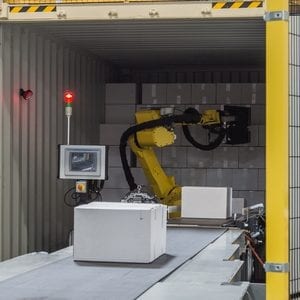
View original at www.dcvelocity.com
Despite rising interest in automated truck loading/unloading equipment, adoption has been sluggish to date. There are three reasons for that, experts say. A near full-employment economy is making it difficult to find warehouse help and driving more companies toward automated solutions that can ease the labor crunch and speed operations throughout the facility. Such solutions are becoming increasingly common for storing and retrieving inventory as well as picking and packing orders, but there’s one area of the warehouse where automated equipment is still pretty scarce: the loading dock. The main reason? An inconsistent environment. Trucks and trailers come in different shapes and sizes, and their contents often vary in weight, shape, and size as well. On top of that, items may have been loaded inconsistently, making it even more difficult to locate and extract specific boxes or pallets . It’s tough to apply machine-based solutions in such a variable environment, according to Tim Criswell, senior vice president of innovation and technology development for Daifuku Wynright Corp., which makes and installs material handling solutions, including robotic truck loading and unloading equipment. "When you’re trying to automate [operations in] trailers specifically, there’s much more variety in the location of the products you’re trying to move and [in] their size and shape and position within the trailer," Criswell says, explaining the difficulty of developing technology that can grasp and move a variety of items without damaging articles around them or bumping into trailer walls, for instance. "All those things are easy for a human to do, [but it’s] more challenging to automate that process." Easy for humans to do, yes, but not so enjoyable in practice. Loading or unloading hundreds of heavy boxes, often in extreme temperatures, makes the loading dock an area of high employee turnover for many operations—and a prime […]



Leave a Reply
You must be logged in to post a comment.